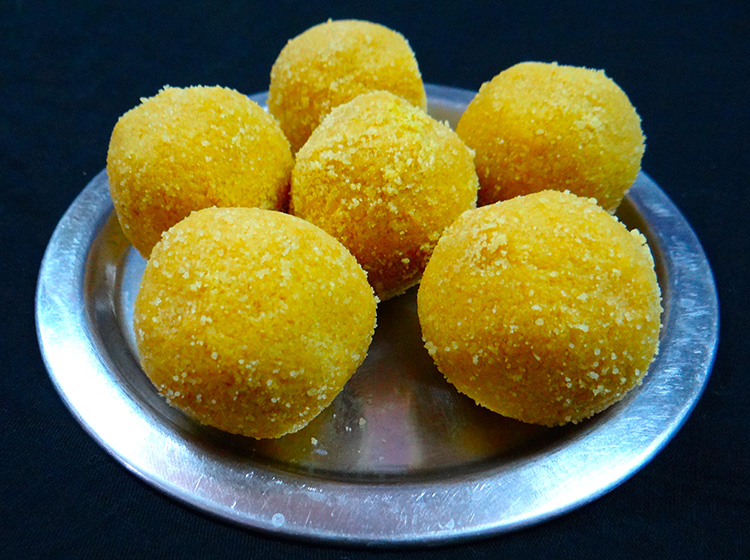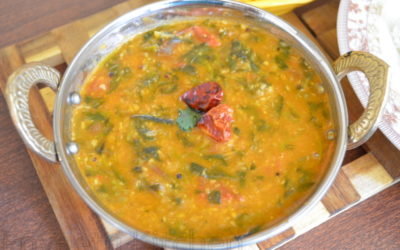LADDUS
Laddu or laddoo is a round/spherical shaped sweet. The name is said to have originated from the Sanskrit word Lattika. Laddus are made of flour, ghee/butter/oil, and sugar/jaggery, with other ingredients that vary by recipe, like chopped nuts or dried raisins. They are often served at festive or religious occasions. Laddoos are the most popular sweet dish from the vast cuisine of India and a favorite offering as prasad/naivedyam in temples across the sub-continent as well
as in all major Hindu celebrations such as births, naming ceremony, weddings, etc.
Ingredients:
Laddu can be prepared from a variety of grains, legumes or seeds, sugar/jaggery and ghee. Some popular ones include laddu made with roasted wheat, amaranth, garden cress seeds, fenugreek seeds, and peanuts respectively.
Preparation:
The required flour is combined with sugar and other flavorings, cooked in ghee and molded into a ball shape. Some laddu recipes are prepared using Ayurvedic medicinal ingredients, such as methi (fenugreek seed) laddu, multigrain and resin laddu. Dry fruits such as raisins, cashew nuts, pistachios and almonds are commonly added into laddus.
Of all laddus, the most famous is the boondi laddu which is a staple offering at Hindu temples, weddings, and Hindu festivals. Of these, the Tirupati Laddu of the Tirupati Tirumala Devasthanam is the most famous and greatly sought after. The second most popular laddu is the besan laddu made of chickpea (besan) flour, sugar and ghee.
Other well known laddus include rava laddu (made from semolina), til laddu (made from sesame seeds), pinni laddu (made with wheat flour) and coconut laddu.
A less known but nutritious laddu given to lactating mothers is the gond laddu/dink laddu. These laddus are called dinkache ladoo in Marathi and gond ka laddu in Hindi. The main ingredient is gum arabic which is collected from the babhul tree. Other ingredients in the gond laddu include coconut, almonds, cashews, dates, spices such as nutmeg and cardamom, poppy seeds, ghee, and sugar. An alternative multigrain recipe will have a portion of gum replaced by grains and legume flours such as besan, urid, ragi (nachani in Marathi) and wheat.
ANOTHER VARIETY OF KOOLPAPPAD / PORI VILANGAI BALLS

Ingredients:
Ghee – 2 and ½ palam
Wheat flour – 12 palam
Milk – 3 palam
Brown sugar – 12 palam
Grated coconut – 3 palam
Cardamom powder – ¼ palam
Bengal gram/Chana dal — ¼ padi
Method:
● Soak and wash the whole wheat ½ padi and remove the husk. Dry it well. Clean Bengal
gram/Chana dal ¼ padi, mix it with the cleaned wheat and grind it to flour.
● Heat ghee in a pan. Add wheat flour into the heated pan and fry. Transfer this into
another pan. Pour milk into a pan and boil it. Add brown sugar into the milk and boil it.
When it comes to the consistency of a string, add coconut or dessicated coconut
(copra). Add this to the sugar syrup along with the fried wheat flour and stir well.
Remove from fire. Add cardamom powder to the wheat flour mixture and stir well. Pat
milk into your hands and make balls or laddus while the flour is hot.
But brown sugar and ghee has to be increased in this recipe. Yellow gram/ Moong dal can be used instead of Chana dal /Bengal gram and rice instead of wheat flour.





0 Comments